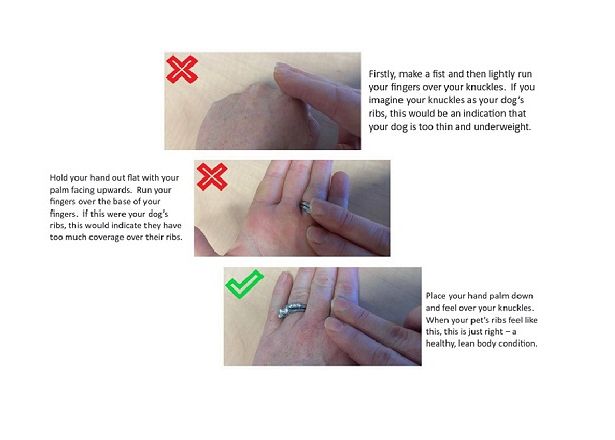07th Feb 2021
CANINE OBESITY - PART THREE

Any extra weight they have to carry around will take its toll on their joints in the end. It may be due to a lack of exercise or being uninformed when it comes to correct portion sizes for the dog’s level of activity.
Quite often, pet obesity is simply caused by a lack of knowledge, rather than intentional actions – a titbit here and there won’t hurt, but when given regularly it all adds up, especially if the dog is already being fed more than it is burning off.
Here are some signs to look out for in your dog:
- Ribs – Overweight pets have a layer of fat covering their ribs, which makes them difficult to see or even feel.
- Back – A ‘fat pad’ will cover their back and many will get a dimple just above the tail where the fat is sitting either side.
- Tummy – Your dog’s tummy will bulge out and sag downwards, which may wobble or sway when they move.
- Face, legs and neck – Obese dogs can get fat pads in these areas – if they are extremely overweight it will look like they have no neck.
How to determine your dog’s body condition?
- Firstly, make a fist and then lightly run your fingers over your knuckles. If you imagine your knuckles as your dog’s ribs, this would be an indication that your dog is too thin and underweight.
- Hold your hand out flat with your palm facing upwards. Run your fingers over the base of your fingers. If this were your dog’s ribs, this would indicate they have too much coverage over their ribs.
- Place your hand palm down and feel over your knuckles. When your pet’s ribs feel like this, this is just right – a healthy, lean body condition.





